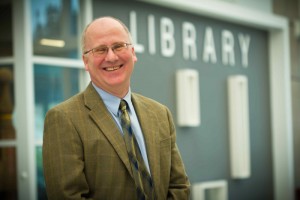On Thursday, May 14, Camosun College announced that it would be delivering a mix of online and in-person classes in the fall, noting that in-person classes are only possible if rates of COVID-19 transmission in BC remain low or in decline.
Camosun vice president of education John Boraas says that there’s a lot the college is concerned about right now. For example, Boraas says there is currently about 75 percent of the amount of international students enrolled in this summer semester compared to summer 2019 (a study permit cannot be issued for distance learning, and distance learning does not require one). But Boraas also says that it’s a pretty consistent trend that when the economy takes a downturn, domestic-student enrolment goes up.
“The School of Business, this year, for domestic students over the summer has a fairly significant increase in numbers,” he says. “We’re curious what’s going to happen in the fall with student numbers. International, obviously, is affected by the fact that no one can get here.”

Boraas says post-secondary institutions around the world are being hit hard; he calls it “a frightening reality.”
“As much as we love our students, they also are part of our physical structures,” he says. “With drops come budget realties.”
Boraas says the college is working really closely with government right now, and believes—although it has not been finalized—that they will be given some tools to get through the current situation. (Other provinces have made cuts to post-secondary budgets.)
“Government has, from the outset, identified post-secondary as a critical part of not only moving through the pandemic but also then for the future of the economy, for us to be able to continue to have students moving into the system,” he says. “They want to be sure we’re able to navigate this.”
Most likely, for phase three of the provincial government’s re-opening plan, Camosun will offer courses that don’t involve any or much hands-on work—such as, for example, creative writing—online, while classes that require more in-person training—like those in trades, health, and sports and exercise programs—will be in person.
“At its simplest, that’s accurate,” says Boraas. “The health authorities have asked us to have as few students on campus as is possible while keeping things running… We’ve asked programs, faculties, schools to schedule for fall as much as possible using distance technology.”
Boraas says that the college is also looking at “bringing together in small groups” students from programs who may be more in need of supports, such as lower-level access programs, as well as, if the province continues to move ahead in its plan, students in programs that could be held fully online. But this all depends on COVID-19 transmission rates, and is a decision for later in the summer, says Boraas.
“One of the things that I love about Camosun is the relationship that exists between faculty and students,” he says, “and if there’s anything we can do to nudge toward that kind of presence, we will, but it’s going to be a decision made a little later in the summer.”
If that decision is made, it would be done with physical distancing, sanitizing stations, and possibly, according to an email sent out by the college on May 7, “daily screening protocol for all staff and students.”
The college is currently dealing with how best to bring the dental students back before they miss their accreditation cycle, says Boraas. Dental already uses personal protective equipment, but the appropriate signs and markers—like the ones currently in grocery stores—must be put up, says Boraas, and a system to safely enter and exit the building, and regular room sanitizing, must be implemented.
“All of those are parts of what we do,” says Boraas. “Perhaps one of the reasons we find it so hard, [the virus] does prevent our natural social inclinations… It’s a very strange thing to kind of deconstruct our activities.”

